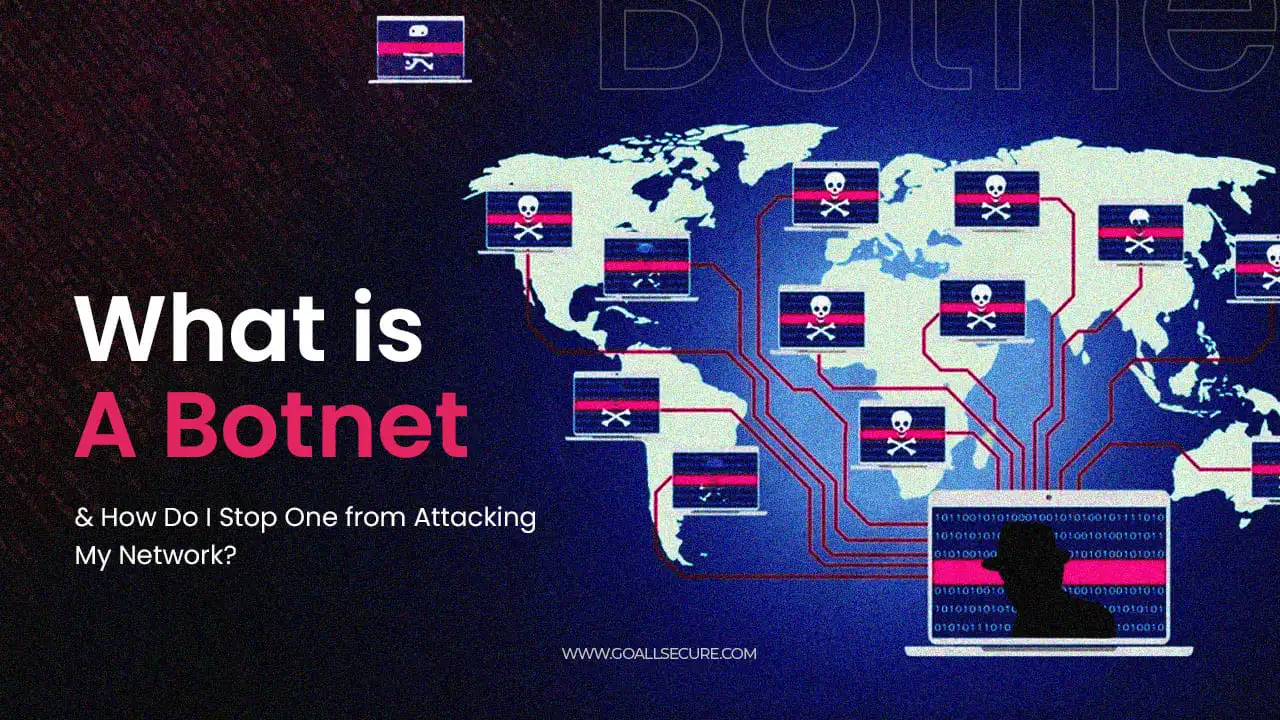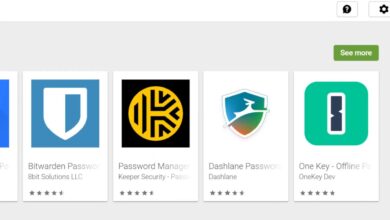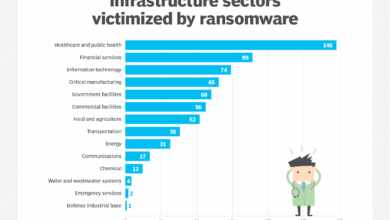
Battling the Botnet Armies A Digital War
Battling the botnet armies is a constant, evolving struggle in the digital world. These vast networks of compromised computers, controlled by malicious actors, pose a significant threat to individuals, businesses, and even national infrastructure. From devastating DDoS attacks that cripple websites to insidious data breaches that steal sensitive information, botnets represent a potent force in the cybercrime landscape.
This exploration delves into the intricate workings of botnets, revealing their inner mechanisms and the strategies employed to combat them.
We’ll unravel the complexities of botnet architecture, from the command-and-control servers orchestrating the attacks to the individual infected machines acting as unwitting accomplices. We’ll examine the diverse methods used to recruit new bots, including sophisticated social engineering tactics and the exploitation of software vulnerabilities. Furthermore, we’ll explore the various types of attacks launched by these digital armies, from the overwhelming power of DDoS attacks to the stealthy operations of data theft.
Understanding these tactics is crucial to building effective defenses.
Understanding Botnet Structures and Operations
Botnets represent a significant threat in the digital landscape, capable of unleashing devastating attacks and causing widespread disruption. Understanding their architecture, recruitment methods, and attack capabilities is crucial for effective defense. This section delves into the inner workings of these malicious networks.
Botnet Architecture
A botnet’s architecture typically centers around a hierarchical structure. At the top sits the command-and-control (C&C) server, acting as the brain of the operation, issuing commands and receiving data from the bot nodes. These nodes, compromised computers infected with malware, form the network’s muscle, carrying out the attacks. Different botnets employ various C&C structures; some use a single, centralized server, while others utilize a more distributed architecture with multiple C&C servers or even peer-to-peer (P2P) communication to enhance resilience against takedown attempts.
The communication between the C&C server and bot nodes can be encrypted to hinder detection and analysis.
Botnet Communication Methods and Attack Vectors
The following table illustrates different botnet types, their communication methods, and common attack vectors:
| Botnet Type | Communication Method | Common Attack Vectors | Example |
|---|---|---|---|
| IRC-based | Internet Relay Chat (IRC) | DDoS attacks, spam | Early botnets often used IRC for communication |
| HTTP-based | HTTP requests to a C&C server | DDoS attacks, data theft, malware distribution | Many modern botnets use HTTP for covert communication |
| P2P-based | Peer-to-peer communication | DDoS attacks, botnet resilience | This structure makes botnets harder to dismantle |
| Email-based | Email commands and responses | Spam, phishing | This method is less common due to email filtering |
Botnet Recruitment Methods
Botnets recruit new members by exploiting vulnerabilities in software and through social engineering tactics. Vulnerabilities range from outdated operating systems and applications to unpatched security flaws in web servers and routers. Attackers often leverage automated tools to scan the internet for vulnerable systems, exploiting these weaknesses to install malware that turns the compromised machines into bot nodes. Social engineering, on the other hand, relies on tricking users into downloading and installing malware, typically through phishing emails containing malicious attachments or links to infected websites.
Types of Botnet Attacks
Botnets are capable of launching a wide range of attacks. Distributed Denial-of-Service (DDoS) attacks flood targeted servers with traffic, rendering them unavailable to legitimate users. Spam campaigns use botnets to send massive volumes of unsolicited emails, often for phishing or malware distribution. Data theft operations leverage compromised machines to steal sensitive information, such as credit card details, login credentials, or intellectual property.
For example, the Mirai botnet, notorious for its massive DDoS attacks, infected IoT devices with weak default passwords. Another example is the Gameover ZeuS botnet, which stole banking credentials from infected computers.
Identifying and Detecting Botnet Activity
So, you’ve learned about botnet structures – now let’s talk about how to spot them. Detecting botnet activity isn’t about finding a single smoking gun, but rather piecing together a puzzle of suspicious indicators. The earlier you identify a botnet infection, the better your chances of containing the damage and preventing further compromise. This involves understanding the subtle signs and leveraging the right tools.
Identifying botnet activity requires a multi-faceted approach combining network monitoring, security analysis, and proactive deception techniques. By understanding the typical behaviors of infected machines and leveraging advanced tools, we can effectively combat these malicious networks.
Indicators of Compromise (IOCs) for Botnet Detection
Several indicators can point towards a botnet infection. Recognizing these clues is crucial for timely intervention. The following list represents some common IOCs, but remember that botnet operators constantly evolve their techniques, so staying updated on the latest threats is paramount.
- Unusual network traffic patterns: A sudden surge in outgoing connections to unusual IP addresses or domains, especially to known command-and-control (C&C) servers, is a strong indicator. This could involve a high volume of connections to a single IP address or a large number of short-lived connections.
- High bandwidth consumption: Unexpectedly high upload or download speeds, particularly at odd hours, can signal a compromised machine sending data to a botnet C&C server.
- Suspicious processes: The presence of unknown or unusual processes running on a system, especially those consuming significant CPU or memory resources, warrants investigation. These processes might be related to botnet malware.
- Modified system files: Changes to critical system files, registry entries, or host files can indicate malware infection. Botnets often modify these to maintain persistence or evade detection.
- Abnormal DNS requests: Frequent DNS queries to suspicious or unregistered domains could signify communication with a botnet C&C server. Unusual DNS traffic patterns, such as a high volume of requests to a single domain, should be flagged.
- Delayed or unusual responses: If a machine responds slowly or erratically to network requests, it might be under the control of a botnet, as its resources are being diverted to malicious activities.
Network Monitoring Tools and Intrusion Detection Systems (IDS)
Network monitoring tools and Intrusion Detection Systems (IDS) play a vital role in identifying botnet traffic. These tools provide real-time visibility into network activity, allowing security professionals to detect anomalies and potential threats. IDS systems, in particular, are designed to analyze network traffic for malicious patterns and alert administrators to suspicious events.
Network monitoring tools such as Wireshark can capture and analyze network packets, providing detailed information about communication patterns. IDS systems, such as Snort or Suricata, can be configured to detect known botnet signatures or unusual behaviors, such as a large number of connections to a specific IP address or port. By correlating data from these tools, security analysts can identify and investigate potential botnet activity.
Honeypots and Deception Techniques
Honeypots are decoy systems designed to attract and trap attackers. By deploying honeypots, organizations can gain valuable insights into botnet behavior without risking the compromise of critical systems. These systems mimic vulnerable systems, attracting botnet scanners and allowing security professionals to observe their actions. This provides valuable information about botnet tactics, techniques, and procedures (TTPs).
Deception techniques, such as deploying low-interaction honeypots (which provide limited interaction to attackers) or high-interaction honeypots (which offer more realistic interactions), allow for the collection of detailed information on botnet activities. Analyzing the data collected from these honeypots can help identify new botnet variants, C&C servers, and attack vectors. This information can then be used to improve security defenses and enhance detection capabilities.
Battling botnet armies requires constantly evolving defenses. Building robust, scalable applications is key, and that’s where understanding the future of app development comes in, like what’s discussed in this great article on domino app dev, the low-code and pro-code future. Leveraging these advancements helps us create more secure systems, ultimately strengthening our fight against these digital threats.
The quicker we adapt, the better equipped we’ll be to win.
Mitigation and Defense Strategies
Botnet attacks represent a significant threat to individuals and organizations alike. Effective mitigation requires a multi-layered approach encompassing preventative measures, robust detection systems, and swift incident response capabilities. A comprehensive security plan is crucial for minimizing the impact of these attacks and ensuring business continuity.Building a resilient defense against botnets involves understanding their attack vectors and implementing strategies to prevent infection and limit damage.
This includes securing network infrastructure, endpoints, and applications, and deploying effective security solutions to detect and neutralize malicious activity.
Network Infrastructure Security
Securing your network infrastructure is the first line of defense against botnet infections. This involves implementing strong firewalls to control network traffic, regularly updating network devices with the latest security patches, and utilizing intrusion detection and prevention systems (IDPS) to monitor network activity for suspicious patterns. Implementing robust access control lists (ACLs) to restrict access to sensitive network resources is also crucial.
Regular network vulnerability scans can identify and address weaknesses before they can be exploited by botnet operators. Consider employing a dedicated network segmentation strategy to isolate critical systems from less secure areas of the network, limiting the potential damage from a successful botnet compromise.
Endpoint Security, Battling the botnet armies
Endpoint security focuses on protecting individual computers and devices within the network. This involves deploying and maintaining up-to-date anti-malware software on all endpoints, including desktops, laptops, and mobile devices. Regular software updates are vital to patching known vulnerabilities. Implementing strong password policies and multi-factor authentication (MFA) adds an extra layer of security. User education plays a significant role; employees should be trained to recognize and avoid phishing emails and malicious websites, common vectors for botnet infections.
Regular endpoint security assessments, including vulnerability scans and penetration testing, can identify and address weaknesses in endpoint security posture.
Security Solutions Comparison
Several security solutions are available for combating botnets, each with its strengths and weaknesses. Firewalls act as the first line of defense, filtering network traffic based on pre-defined rules. Anti-malware software detects and removes malicious software from endpoints. Intrusion prevention systems (IPS) actively monitor network traffic for malicious activity and block suspicious connections. Next-Generation Firewalls (NGFWs) combine firewall functionality with advanced threat protection capabilities, such as deep packet inspection and application control.
A comprehensive security strategy typically involves a combination of these solutions working in concert to provide robust protection. The choice of specific solutions depends on factors such as budget, network size, and the level of security required. For example, a small business might rely on a combination of a NGFW and anti-malware software, while a large enterprise might employ a more complex system incorporating multiple IPS devices, SIEM systems, and dedicated threat intelligence feeds.
The Legal and Ethical Dimensions
The fight against botnets isn’t just a technical challenge; it’s deeply intertwined with legal and ethical considerations. Understanding the legal ramifications for individuals and organizations involved, as well as the ethical implications of the security tools used to combat them, is crucial for a holistic approach to this persistent threat. This section explores the complex interplay of law, ethics, and the global effort to dismantle botnet operations.The legal landscape surrounding botnets is multifaceted and often depends on jurisdiction.
Participating in a botnet attack, whether by knowingly contributing your compromised machine or actively launching attacks, carries significant legal consequences. The penalties can range from hefty fines to imprisonment, depending on the severity and scale of the attack, and the specific laws violated. For instance, the Computer Fraud and Abuse Act (CFAA) in the United States, or similar legislation in other countries, can be applied to prosecute individuals and organizations involved in botnet-related crimes.
Legal Ramifications of Botnet Participation
Individuals who unknowingly contribute their compromised machines to a botnet often face limited legal repercussions, particularly if they can demonstrate a lack of intent or knowledge. However, those actively involved in creating, controlling, or utilizing botnets for malicious purposes face serious legal consequences. These consequences can include charges related to unauthorized access, data theft, fraud, and disruption of services, resulting in significant prison sentences and substantial financial penalties.
Corporations can also face legal action for failing to adequately secure their systems, leading to their computers being compromised and used in botnet attacks. This highlights the critical importance of robust cybersecurity practices and incident response plans.
Ethical Considerations in Botnet Countermeasures
The development and deployment of security tools to combat botnets raise important ethical considerations. While these tools are vital for protecting systems and data, they can potentially infringe on privacy if not carefully designed and implemented. For example, some anti-botnet technologies may monitor network traffic or analyze user behavior, raising concerns about data collection and potential misuse. Striking a balance between effective security and respecting individual privacy is a critical challenge.
Furthermore, the potential for misuse of these tools, such as targeting legitimate users or systems, must be carefully considered and mitigated. Ethical guidelines and responsible disclosure practices are essential to ensure these powerful tools are used ethically and effectively.
Law Enforcement and International Cooperation
Combating global botnet operations requires significant law enforcement involvement and strong international cooperation. Botnets often operate across national borders, making it challenging to track down and prosecute those responsible. Effective collaboration between law enforcement agencies in different countries is essential to share information, coordinate investigations, and bring perpetrators to justice. International agreements and treaties play a vital role in facilitating this cooperation.
Examples include initiatives focused on cybercrime investigation and information sharing, such as the Budapest Convention on Cybercrime. The effectiveness of these efforts depends on the willingness of nations to cooperate and share resources, as well as the development of robust legal frameworks that address the transnational nature of botnet activity. Successful takedowns of large-scale botnets often involve coordinated efforts between multiple law enforcement agencies and private sector security companies.
Case Studies of Notable Botnet Attacks

Botnet attacks continue to pose a significant threat to individuals, businesses, and critical infrastructure. Examining past incidents provides invaluable insights into evolving attack methods and helps refine our defensive strategies. This section delves into specific case studies, highlighting the techniques employed, the impact on victims, and the responses to neutralize these threats.
The Mirai Botnet Attack
The Mirai botnet, first observed in 2016, stands as a prime example of a devastating large-scale Distributed Denial-of-Service (DDoS) attack. Mirai infected a vast number of Internet of Things (IoT) devices, such as security cameras and routers, exploiting their weak default passwords and vulnerabilities. These compromised devices formed a massive botnet, capable of launching incredibly powerful DDoS attacks that overwhelmed targeted servers and networks.
The attack on Dyn, a major Domain Name System (DNS) provider, significantly disrupted internet access for numerous popular websites and services, highlighting the potential for widespread disruption caused by such attacks. Victims experienced prolonged outages, loss of service, and reputational damage. The takedown involved international collaboration, identifying and disabling command-and-control servers, and working to patch vulnerabilities in IoT devices.
Key Takeaway: The Mirai attack underscored the vulnerability of IoT devices and the potential for their exploitation in large-scale botnet operations. Strengthening IoT device security and implementing robust DDoS mitigation strategies are crucial to preventing similar incidents.
Analysis of Past Botnet Attacks Informing Security Strategies
Analysis of attacks like Mirai and others reveals recurring themes that inform the development of more effective security strategies. Understanding the methods used – such as exploiting default credentials, leveraging software vulnerabilities, and using sophisticated command-and-control structures – allows for the development of proactive defenses. This includes implementing stronger password policies, regularly patching software, deploying intrusion detection and prevention systems, and investing in robust DDoS mitigation solutions.
Furthermore, increased awareness among users about the risks associated with IoT devices and best practices for securing them is crucial. The focus has shifted to proactive threat intelligence, identifying potential botnet activity before it escalates into a full-blown attack.
Operation Bot Roast: A Botnet Takedown
Operation Bot Roast, a multi-agency effort, successfully disrupted a significant botnet responsible for various cybercrimes, including spamming and DDoS attacks. The operation involved identifying and seizing the botnet’s command-and-control servers, disrupting communication between the attacker and the compromised devices. Investigators used a combination of techniques, including network analysis, malware reverse engineering, and collaboration with internet service providers (ISPs) to track down and neutralize the botnet infrastructure.
Challenges included the decentralized nature of the botnet, the constant evolution of malware, and the need for international cooperation. The takedown significantly reduced the botnet’s capacity to launch attacks and disrupted the criminal activities associated with it.
Closing Notes

The fight against botnet armies is far from over. It’s a dynamic and ever-changing battleground, demanding constant vigilance and adaptation. While effective security measures, like robust network monitoring, proactive patching, and strong security awareness, are essential, the human element remains crucial. Educating individuals and organizations about the risks and promoting responsible online behavior are paramount in disrupting the recruitment and growth of these malicious networks.
The collective effort of individuals, organizations, and law enforcement is vital in mitigating the threat posed by these digital adversaries, securing our digital future, one botnet at a time.
Question Bank: Battling The Botnet Armies
What is a botnet herder?
A botnet herder is the individual or group that controls and commands a botnet. They are the masterminds behind the attacks launched by the botnet.
How can I tell if my computer is part of a botnet?
Signs include unusually high network activity, slow performance, strange programs running in the background, and unauthorized email activity. Use anti-malware software and monitor your network usage.
Are botnets always used for malicious purposes?
While overwhelmingly used for malicious purposes, some botnets have been used for benign purposes like distributed computing, though this is rare and ethically questionable.
What’s the difference between a botnet and a virus?
A virus is a single piece of malicious code. A botnet is a network of many compromised computers (bots) controlled by a single entity.





